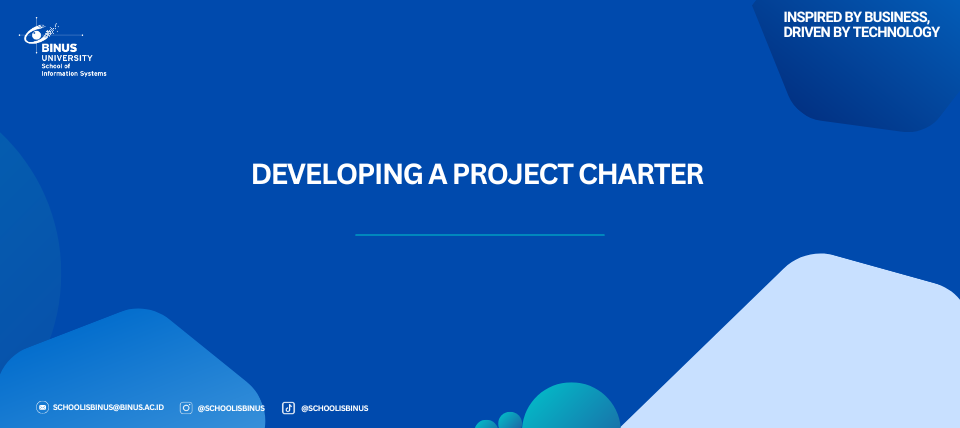Developing A Project Charter

The project charter serves several key purposes:
- Authorization: It formally authorizes the project and the project manager to utilize organizational resources to achieve the project objectives.
- Communication: It communicates the project’s objectives, scope, and stakeholders to all relevant parties, ensuring everyone is aligned.
- Foundation for Planning: It provides a foundation for further project planning and development, including detailed project management plans.
Key Components of a Project Charter
A well-structured project charter typically includes the following components:
- Project Title and Date of Authorization: Clearly state the name of the project and the date it is authorized to begin.
- Project Manager’s Information: Include the name and contact information of the project manager, ensuring that stakeholders know who to reach for project-related inquiries.
- Project Objectives: Define the specific goals the project aims to achieve. These should be clear, measurable, and aligned with organizational objectives.
- High-Level Requirements: Outline the essential requirements that the project must meet to be considered successful. This may include technical specifications, quality standards, and compliance needs.
- High-Level Risks: Identify potential risks that could impact the project. This helps in planning for risk management strategies early in the project lifecycle.
- Stakeholders: List key stakeholders involved in the project, including their roles and responsibilities. This ensures that everyone understands their involvement and expectations.
- Project Scope: Provide a high-level description of what is included in the project and what is excluded. This helps to set boundaries and manage stakeholder expectations.
- Budget Summary: Include a preliminary budget estimate, outlining the financial resources required for the project.
- Timeline: Provide an overview of the project timeline, including major milestones and deadlines.
- Approval Signatures: The charter should include spaces for signatures from key stakeholders and top management to indicate their approval and support for the project.
Inputs for Developing a Project Charter
Several inputs are essential for creating a comprehensive project charter:
- Business Case: A business case justifies the project’s investment and includes information such as project objectives, high-level requirements, and estimated costs and benefits. This information is critical for developing a realistic charter.
- Benefits Management Plan: This document outlines how and when the projected benefits of the project will be delivered and managed. It includes metrics for measuring success and strategic alignment.
- Agreements: If the project is under contract for an external customer, relevant agreements should be reviewed to ensure that the charter aligns with contractual obligations.
- Enterprise Environmental Factors: These include relevant government or industry standards, organizational infrastructure, and marketplace conditions that may influence the project.
- Organizational Process Assets: This encompasses formal and informal plans, policies, procedures, and historical information that can guide the project’s development.
Tools and Techniques for Developing a Project Charter
The development of a project charter can utilize various tools and techniques:
- Expert Judgment: Consulting with experienced project managers and stakeholders can provide valuable insights and ensure that the charter is realistic and comprehensive.
- Data Gathering: Collecting data from various sources, including stakeholder interviews and historical project information, can inform the charter’s content.
- Interpersonal and Team Skills: Effective communication and collaboration among team members and stakeholders are essential for gathering input and achieving consensus on the charter’s content.
- Meetings: Facilitated meetings can help bring together key stakeholders to discuss and finalize the project charter.
Importance of a Project Charter
Starting with a well-defined project charter is critical for project success. It helps to clarify requirements and expectations, reduces ambiguity, and provides a reference point for managing the project. If project managers encounter challenges in obtaining support from stakeholders, they can refer to the agreements and objectives outlined in the charter to reinforce their position.
References:
Schwalbe, K. (2019). Information technology project management (9th ed.). Cengage.

